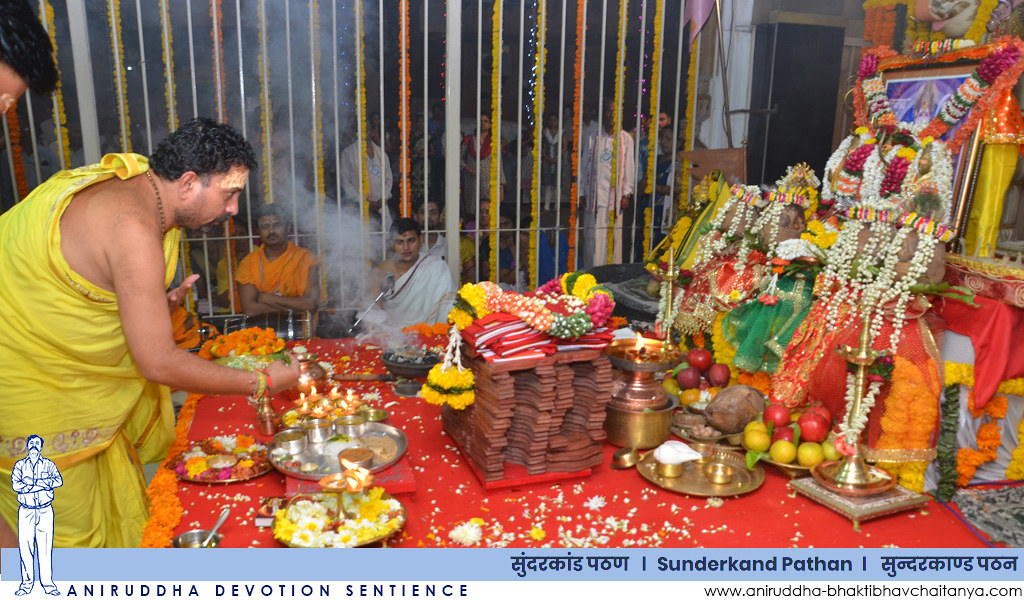Overview
Introduction to Sunderkand
Sunderkand is a significant chapter in the ancient Indian epic, Ramayana. It is composed by the sage Valmiki and is considered to be one of the most important sections of the epic. The word ‘Sunderkand’ translates to ‘beautiful chapter’, and it is named so because of the beautiful and profound messages it conveys. This chapter primarily focuses on the adventures of Hanuman, the mighty monkey god, as he embarks on a mission to find Sita, the wife of Lord Rama, who has been abducted by the demon king Ravana. Sunderkand is not only a captivating narrative but also holds immense spiritual and cultural significance for millions of devotees worldwide. It is believed that reciting or listening to Sunderkand brings blessings, protection, and divine intervention. The bold passages in this paragraph emphasize the importance of Sunderkand in the context of Ramayana and its impact on the lives of people.
Historical context of Sunderkand
Sunderkand, a chapter in the epic Ramayana, holds immense historical significance. It is believed to have been composed by the sage Valmiki, who is considered the author of the Ramayana. The historical context of Sunderkand revolves around the journey of Lord Hanuman to Lanka in search of Sita, the wife of Lord Rama. This chapter showcases Hanuman’s extraordinary strength, devotion, and intelligence. Sunderkand is often regarded as a jewel in the Ramayana, highlighting the courage and determination of Hanuman. It serves as a reminder of the power of faith and the triumph of good over evil. The keyword ‘jewel’ in this context signifies the exceptional value and importance of Sunderkand in the Ramayana. The highlights of this chapter include Hanuman’s leap across the ocean, his encounter with various mythical creatures, and his eventual discovery of Sita in Ashoka Vatika. These highlights can be explored further through hyperlinks for a deeper understanding of the story.
Importance of Sunderkand in Hindu mythology
Sunderkand, a chapter from the epic Ramayana, holds immense importance in Hindu mythology. It is considered to be one of the most significant sections of the Ramayana and is widely recited by devotees during the Sunderkand path. This chapter narrates the journey of Hanuman to Lanka in search of Sita, Lord Rama‘s wife, who had been abducted by the demon king Ravana. Sunderkand showcases the unwavering devotion and strength of Hanuman, who overcomes various obstacles and ultimately succeeds in finding Sita. The path of Sunderkand is believed to bring blessings, protection, and fulfillment of desires to those who recite it with sincerity and devotion. The recitation of Sunderkand is also believed to alleviate various troubles and bring peace and prosperity. It serves as a reminder of the power of faith and the triumph of good over evil.
The Ramayana

Brief summary of the Ramayana
The Ramayana is a Hindu scripture that holds immense historical significance. It is an ancient epic that tells the story of Lord Rama and his journey to rescue his wife Sita from the demon king Ravana. The Ramayana is divided into seven books, and one of the most important books is Sunderkand. Sunderkand is a chapter in the Ramayana that focuses on the adventures of Hanuman, the monkey god. In this chapter, Hanuman travels to Lanka, the kingdom of Ravana, in search of Sita. He faces numerous challenges and overcomes them with his strength and intelligence. Sunderkand is considered to be a pivotal part of the Ramayana as it showcases the devotion and loyalty of Hanuman towards Lord Rama. It is a powerful narrative that highlights the values of courage, determination, and righteousness.
Role of Lord Hanuman in the Ramayana
Lord Hanuman plays a crucial role in the epic Ramayana. As the loyal devotee of Lord Rama, Hanuman is depicted as a powerful and intelligent deity. He is known for his unwavering devotion, strength, and bravery. Hanuman’s role is multifaceted, as he acts as a messenger, a warrior, and a diplomat. He is instrumental in helping Lord Rama in his quest to rescue his wife Sita from the clutches of the demon king Ravana. Hanuman’s extraordinary feats, such as leaping across the ocean, burning down Lanka, and lifting the Sanjeevani mountain, showcase his divine powers. His selfless dedication and unwavering loyalty make him an iconic character in Hindu mythology.
Significance of the Sunderkand chapter in the Ramayana
The Sunderkand chapter in the Ramayana holds great historical significance. It is a crucial part of the epic that narrates the journey of Hanuman to Lanka in search of Sita, the wife of Lord Rama. This chapter showcases the immense devotion and loyalty of Hanuman towards Lord Rama and his willingness to go to any lengths to serve him. The Sunderkand chapter also highlights the power and strength of Hanuman, as he overcomes various obstacles and challenges during his mission. It is believed that reciting or reading the Sunderkand brings immense blessings and helps in overcoming difficulties in life. The chapter serves as a source of inspiration and guidance for devotees, teaching them the values of devotion, courage, and determination.
Sunderkand: The Journey

Description of the events in Sunderkand
Sunderkand is a significant chapter in the epic Ramayana, written by the sage Valmiki. It depicts the journey of Hanuman to Lanka in search of Sita, the wife of Lord Rama, who had been abducted by the demon king Ravana. The description of the events in Sunderkand is filled with adventure, bravery, and devotion. One of the most important passages in Sunderkand is the chaupai, which is a four-line verse that encapsulates the essence of the chapter. This verse is often recited by devotees to seek blessings and protection. The chaupai highlights the unwavering faith of Hanuman and his determination to fulfill his mission. It serves as a reminder of the power of devotion and the triumph of good over evil. The events in Sunderkand showcase the extraordinary abilities of Hanuman, such as his ability to fly and change his size at will. These supernatural powers are depicted in vivid detail, captivating the readers and inspiring them with awe. The journey of Hanuman in Sunderkand is not only a physical one but also a spiritual one, as he overcomes various obstacles and tests his faith along the way. The description of the events in Sunderkand is a testament to the rich mythology and cultural significance of the Ramayana.
Lord Hanuman’s encounter with various characters
Lord Hanuman’s encounter with various characters in Sunderkand is of great significance. It provides valuable insights into the wisdom of Sunderkand and the lessons it teaches. One of the notable encounters is with Mother Sita, where Lord Hanuman reassures her of Lord Ram’s imminent arrival. This encounter showcases Lord Hanuman’s unwavering devotion and loyalty. Another important encounter is with the demoness Surasa, whom Lord Hanuman outwits using his wit and intelligence. This encounter highlights Lord Hanuman’s cleverness and strategic thinking. Lord Hanuman’s encounters with other characters in Sunderkand further demonstrate his strength, bravery, and determination in fulfilling his mission. These encounters collectively contribute to the rich historical significance of Sunderkand and showcase the various qualities and virtues embodied by Lord Hanuman.
Key moments and teachings in Sunderkand
Sunderkand, an epic episode in the Ramayana, holds immense historical significance. It is a pivotal moment in the journey of Lord Rama and his loyal devotee Hanuman. This section of the Ramayana showcases key moments and teachings that are revered by millions. Sunderkand highlights the unwavering devotion of Hanuman, his bravery, and his ability to overcome obstacles. It also emphasizes the power of faith, determination, and the importance of staying true to one’s duty. Through the epic episode of Sunderkand, readers are inspired to face challenges with courage and unwavering devotion, just like Hanuman.
Historical Significance

Sunderkand’s impact on Hindu culture
Sunderkand, a chapter from the epic Ramayana, holds immense significance in Hindu culture. Its impact on the religious and spiritual practices of Hindus is undeniable. The sacredness of Sunderkand is evident in the devotion and reverence it receives from millions of followers worldwide. This chapter narrates the journey of Lord Hanuman to Lanka in search of Sita, the wife of Lord Rama. It showcases the unwavering faith and dedication of Lord Hanuman towards his Lord. Sunderkand has been instrumental in shaping the beliefs, rituals, and traditions of Hinduism. It serves as a guiding light for devotees, teaching them the values of courage, devotion, and selflessness. The recitation and study of Sunderkand are believed to bring blessings, protection, and spiritual upliftment to the devotees. Its verses and passages are often recited during religious ceremonies, festivals, and auspicious occasions, further strengthening the bond between the devotee and the divine. The sacredness of Sunderkand continues to inspire and influence the Hindu culture, ensuring its preservation for generations to come.
Influence of Sunderkand on literature and art
Sunderkand, a significant chapter of the Hindu epic Ramayana, holds immense historical importance. Its influence on literature and art is undeniable. The Odia Sunderkand, in particular, has played a crucial role in shaping the cultural and artistic landscape of Odisha. This chapter has inspired numerous literary works, including poems, songs, and plays, that celebrate the heroic deeds of Lord Hanuman and his journey to find Sita, the wife of Lord Rama. The Odia Sunderkand has also been a source of inspiration for artists, who have depicted its scenes and characters in various forms of visual art, such as paintings and sculptures. The rich symbolism and profound spiritual teachings found in the Odia Sunderkand continue to captivate audiences and contribute to the preservation of the region’s cultural heritage.
Sunderkand’s relevance in modern times
Sunderkand’s relevance in modern times can be derived from its historical significance and the timeless lessons it imparts. The epic narrative, composed by Goswami Tulsidas, holds immense cultural and spiritual value for Hindus around the world. Sunderkand, which means ‘Beautiful Chapter’, is a crucial part of the Ramayana, one of the two major Sanskrit epics of ancient India. It recounts the extraordinary journey of Lord Hanuman to find and deliver a message to Lord Rama’s wife, Sita, who had been abducted by the demon king Ravana. The story of Sunderkand teaches us about the power of devotion, courage, and selflessness. It serves as a reminder that even in the face of adversity, faith and determination can lead to triumph. The relevance of Sunderkand in modern times lies in its ability to inspire individuals to overcome obstacles and stay connected to their spiritual roots.
Devotion and Faith

Devotional practices associated with Sunderkand
Sunderkand, a chapter from the epic Ramayana, holds immense historical significance in Hindu mythology. It is a sacred text that narrates the journey of Lord Hanuman to find and deliver a message to Lord Rama’s wife, Sita, who had been abducted by the demon king Ravana. Devotees of Lord Hanuman often engage in various devotional practices associated with Sunderkand. These practices include reciting the Sunderkand text, chanting Hanuman Chalisa, and organizing Sunderkand path gatherings. The recitation of Sunderkand is believed to bring positive energy and protection from evil forces. The chanting of Hanuman Chalisa, a hymn dedicated to Lord Hanuman, is considered a powerful way to seek his blessings and overcome obstacles. Sunderkand path gatherings are organized to collectively recite and celebrate the significance of this sacred text. These devotional practices associated with Sunderkand not only deepen the spiritual connection with Lord Hanuman but also serve as a means of seeking strength, guidance, and blessings in one’s life.
Stories of devotees’ experiences with Sunderkand
Sunderkand, a chapter from the ancient Indian epic Ramayana, holds immense historical significance. It is a tale of devotion, courage, and triumph over adversity. Stories of devotees’ experiences with Sunderkand have been passed down through generations, showcasing the profound impact it has had on people’s lives. One of the key aspects of Sunderkand is its deep connection to the Sanskrit language, which adds to its spiritual essence. Devotees often recite specific passages from Sunderkand, highlighting the power and beauty of the Sanskrit verses. These passages are considered important and are often formatted in bold to emphasize their significance. The stories of devotees’ experiences with Sunderkand serve as a testament to its enduring legacy and the transformative power it holds.
The power of faith in the context of Sunderkand
The power of faith in the context of Sunderkand is a significant aspect to explore. Sunderkand, a chapter from the Indian epic Ramayana, is known for its profound impact on the lives of its readers. It narrates the journey of Lord Hanuman to find Sita, the wife of Lord Rama, who was abducted by the demon king Ravana. The story highlights the unwavering faith and devotion of Lord Hanuman towards Lord Rama. Through his determination and belief in the divine, Lord Hanuman overcomes various obstacles and successfully completes his mission. The Sundara Kanda summary provides a glimpse into the power of faith and its ability to accomplish the seemingly impossible. It serves as a reminder that faith can be a guiding force in one’s life, helping them overcome challenges and achieve their goals.
Conclusion

Summary of the historical significance of Sunderkand
Sunderkand is a significant chapter in the Hindu epic Ramayana, written by sage Valmiki. It narrates the journey of Lord Hanuman to Lanka in search of Sita, the wife of Lord Rama. The historical significance of Sunderkand lies in its portrayal of the unwavering devotion and courage of Lord Hanuman. His selfless actions and unwavering loyalty to Lord Rama serve as an inspiration to millions of devotees. The chapter also highlights the power of faith and the triumph of good over evil. It is believed that reciting or listening to Sunderkand brings blessings and removes obstacles from one’s life.
Personal reflections on the impact of Sunderkand
Sunderkand, a chapter from the epic Ramayana, holds immense historical significance. It is a tale of devotion, courage, and determination that has captivated people for centuries. The provenance of Sunderkand can be traced back to ancient times, making it a valuable piece of literature. Personal reflections on the impact of Sunderkand reveal its profound influence on individuals. The story has the power to inspire and instill a sense of spirituality. It serves as a guiding light in times of darkness and provides solace to those in need. The keywords ‘provenance’ highlight the historical roots of Sunderkand, while the short highlights in the form of hyperlinks offer a deeper exploration of its significance.
Final thoughts on the enduring relevance of Sunderkand
Sunderkand, an epic chapter from the ancient Indian scripture Ramayana, holds immense historical significance. It narrates the journey of Lord Hanuman to Lanka in search of Sita, the wife of Lord Rama. This chapter symbolizes devotion, determination, and the power of good over evil. Sunderkand has been revered for centuries for its teachings on faith, courage, and the importance of staying true to one’s duty. It serves as a reminder of the enduring relevance of ancient scriptures in guiding individuals towards righteousness and moral values.
Author Profile

Latest entries
- 28 June 2025BlogHow to Choose the Best High-Yield Savings Account with 5%+ Interest in India (2025 Guide)
- 28 December 2024Blog13 High CPC Blog Niche for 2025
- 28 December 2024BlogTop 6 Employee Management Software for Small Businesses
- 19 December 2024BlogShri Hanuman Chalisa in Hindi Text with English Translation

